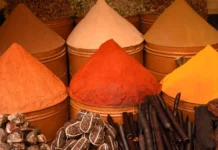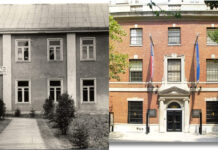For Jews throughout the Diaspora, Passover is celebrated for eight days. The first seder begins on the evening of Saturday, April 12—the 15th of the Jewish month of Nisan—and ends well after sundown on Sunday, April 20. But in Israel, Passover is observed for seven days. After the destruction of the First Temple in 586 BCE, when the Jewish people were scattered, an additional day was added so that news of the holiday could reach countries and areas outside of Jerusalem.
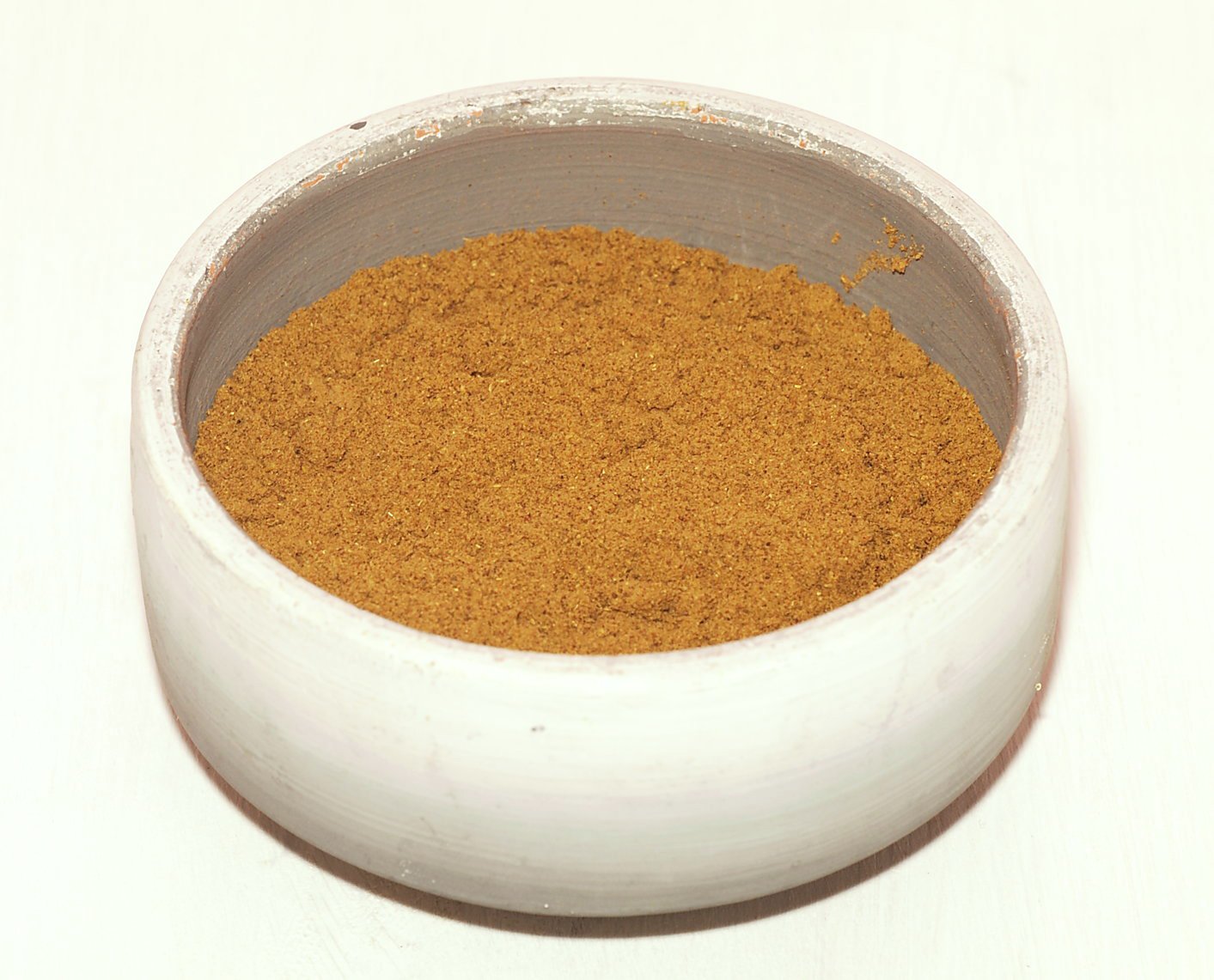
Growing up in an Ashkenazi family—in fact, the only Jewish family on the Shetland Islands, an archipelago in Scotland—I had never heard of Sephardim. But early in my career, I discovered an exciting new culinary world: Sephardic food, which is vibrant with its aromatic herbs and spices, fresh lemons, stuffed vegetables and olive oil—a rich mix of Mediterranean and Middle Eastern flavors. I was hooked.
And that’s why at Passover time at the Hofman home, one seder is Ashkenazi, with all its familiar Eastern European dishes and my mother’s 12-egg sponge cake. The second seder harkens to the Sephardic tradition; no chicken soup this night! Beans, legumes and even rice are allowed, each dish fragrant with dried fruits and spices.
Helen Loeb was born in Toulouse, France, to Moroccan parents Armand and Laurette Cohen-Scali. Now living in the Philadelphia area, her Passover seders are rooted in Moroccan traditions. Petite and smart, with just a trace of French accent, she describes how her parents left Morocco, where her ancestral family had lived for generations. “When the French Protectorate ended in 1956, for Jews, it wasn’t a comfortable situation,” she says. “Most emigrated to Canada, Israel and France.”

In 1962, the family left for Paris. After a year, they settled in Toulouse, where Helen grew up. Today, Israel has few friends around the world, but Morocco renewed diplomatic and other ties when it signed the Abraham Accords on Sept. 15, 2020, as part of an agreement toward Arab-Israeli normalization that also included the United Arab Emirates, Bahrain and Sudan.
Before 1956, Morocco was home to more than a quarter of a million Jews—the largest Jewish community in the Muslim world. Today, according to the World Federation of Moroccan Jewry, nearly 1 million Moroccan Jews and those of Moroccan descent live in Israel. It is the largest minority population in Israel.
For these families, Passover is celebrated in Sephardic traditions. When the Jews were expelled from the Iberian Peninsula in the 15th century, they brought their own culinary customs from Spain, where beans and legumes were eaten at Passover. But in their adopted country, they incorporated Morocco’s abundant fruit and vegetables, lamb, nuts and olives so that Moroccan Passover dishes are quite different from the Passovers of Eastern Europe.
Helen is emphatic about this. “At Passover, we always had lamb—a stew with prunes and raisins,” adding that “there was always fava-bean soup and several more dishes containing green beans.” Lamb commemorates the Passover paschal offering, of which its blood marked the doorposts of the Israelite slaves in Egypt, allowing the Angel of Death to pass over them and spare their firstborn.

She also remembers eating truffles, an edible underground fungus with an earthy, aromatic flavor: “When we could get them, they were expensive and were only for special occasions like at Passover.”
With a large Moroccan population in Israel, it’s no surprise that the Mimouna, a dinner marking the return of eating chametz, is an annual event celebrated with picnics and barbecues. It begins after nightfall on the last day of Passover. Helen remembers so many friends visiting and bringing mufleta—crepes dipped in honey and butter. “We went from house to house, but someone was always left at home to receive friends and family,” she says.
She describes one of the most important Moroccan Passover traditions: “The seder plate is raised and encircled over each person’s head while chanting a blessing for deliverance to freedom.” Even the Ten Plagues are different from an Ashkenazi seder. The leader pours water into a bowl and then pours in wine to recreate what happened when the Nile River turned red with blood. This ritual turns the plagues into a blessing, but in some communities, an unmarried person carries the bowl outside and pours out the contents, wishing that he/she will find their soulmate in the coming year. (It’s a custom that is popular with singles.)
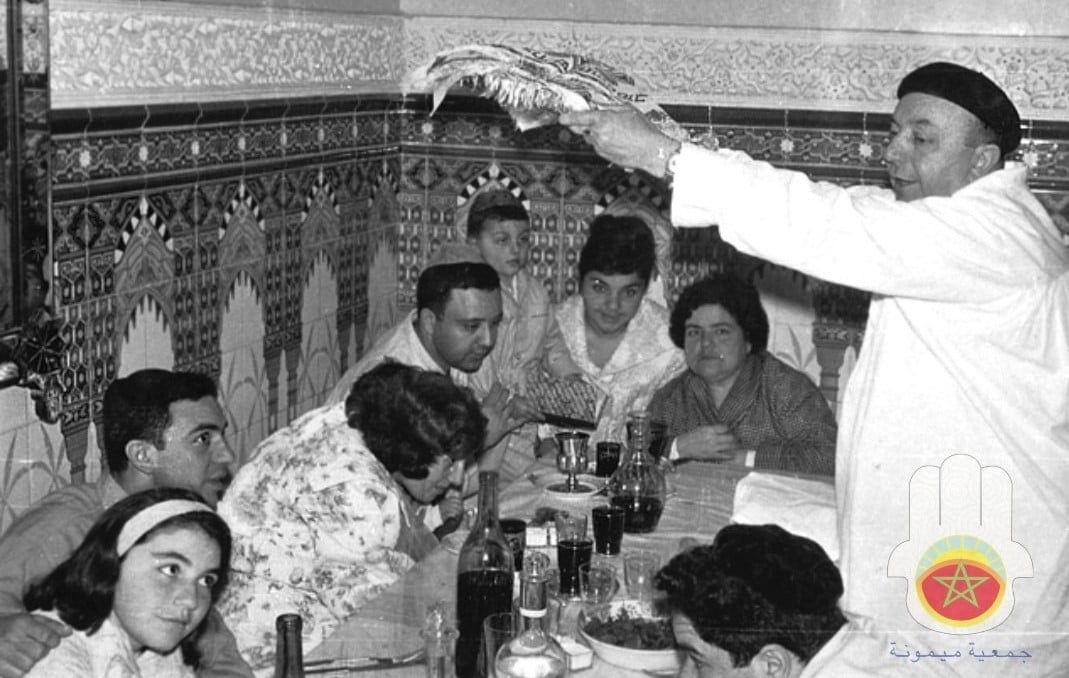
The recipes below are true Passover Moroccan ones. I cook the tagine-like lamb stew in a crockpot, but it may be cooked in a heavy pot in the oven. The heavenly aromas that waft from your kitchen come from the variety of spices, which are rather laborious when you need to measure each ingredient. But searching online, I found ras el hanout, a kosher blend of 10 spices, including lavender and anise. Add judiciously to flavor soups, stews and vegetables. I’ve included other spices as a substitute. If you want to omit the chickpeas, add a little more potatoes.
The charoset is a spicy blend of prunes, dates, apricots and walnuts rolled into little balls or bricks. Make a lot; they are addictive to snack on. The name charoset originally comes from the word for “clay” (cheres), a reference to the mortar that the Israelites used to make bricks when they were slaves in Egypt. For the soup, flat, tan fava beans are traditional. They are not easily available here, but frozen baby lima beans are a good substitute. Delicious and nutritious, it’s a dish you can make year-round.
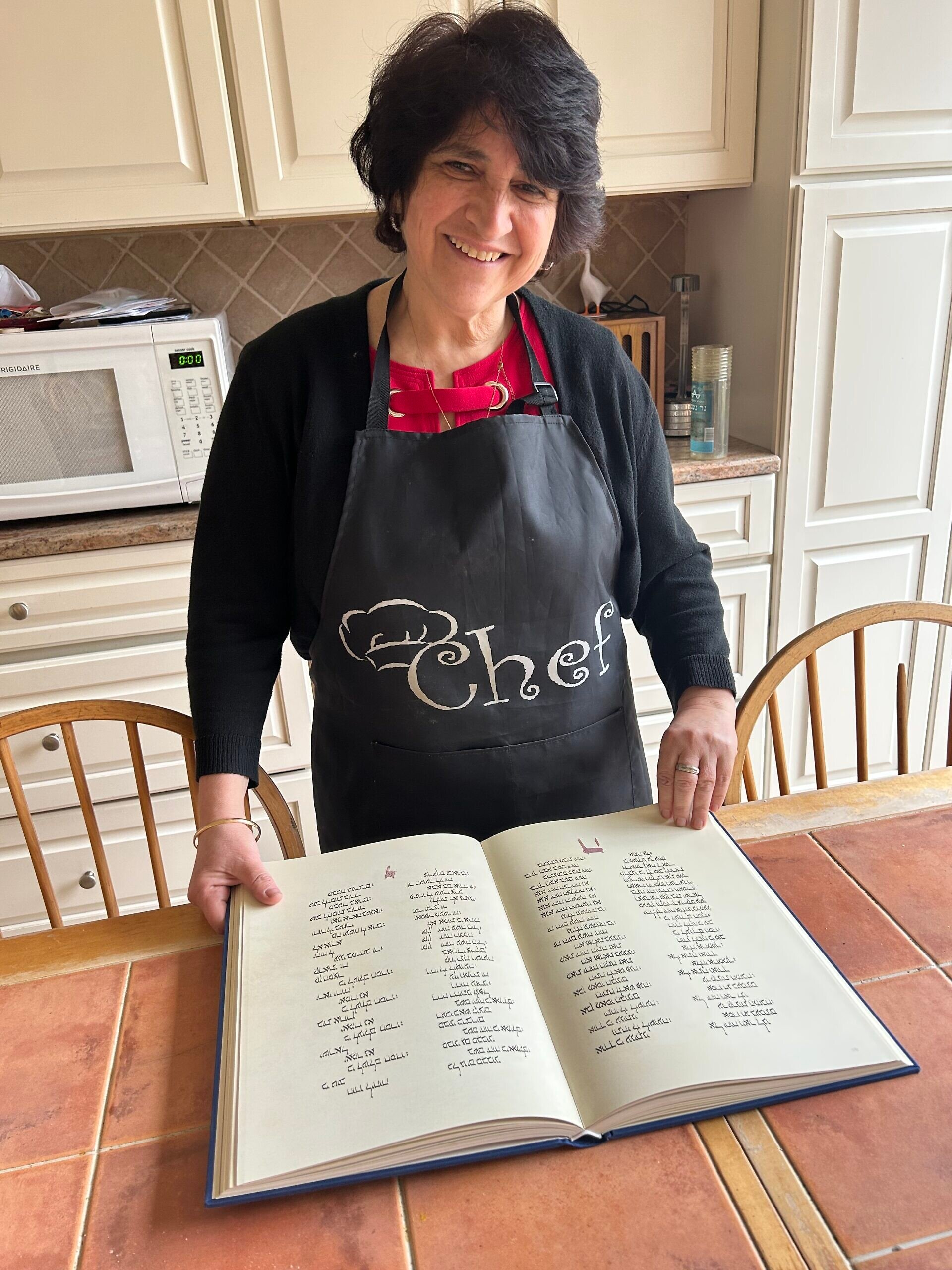
Desserts are an abundance of sweet and simple. A loaded sweet table may include dates stuffed with marzipan, fruit preserves, attractive platters of cantaloupe, honeydew, black and green grapes, and chocolate-dipped fruit and nuts.
Chag Pesach Sameach!
Sephardic Menu
(Recipes for starred items only)
Seder Plate
*Moroccan Charoset, Matzah and Wine
*Moroccan Bean Soup
*Blood Orange-and-Olive Salad
*Crockpot Lamb Stew With Dried Fruits
Green Beans Almondine
Seasonal Fruit and Nut Platter
*Chocolate-Dipped Apricots and Almonds
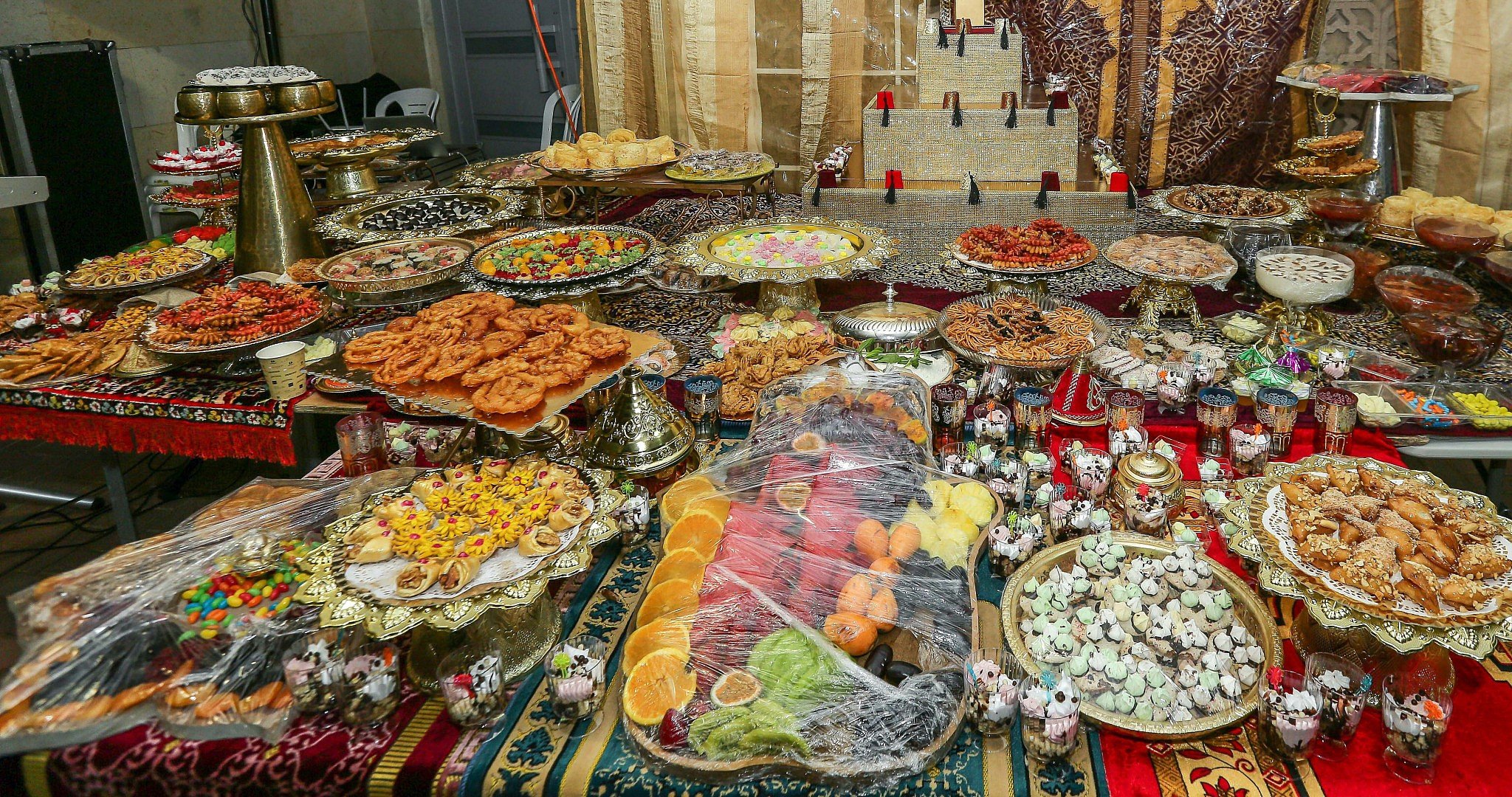
Moroccan Charoset (Pareve)
Makes 15-20 balls
Cook’s Tips:
*Any combination of dried fruits, such as peaches and pineapple, may be used.
*Check for any pits left in pitted dates and prunes.
*In a hurry? Spoon charoset into a bowl. Drizzle with honey.
Ingredients:
10 pitted prunes
10 pitted dates
10 dried apricots
1 cup walnuts
1 teaspoon cinnamon
¼ teaspoon ground cloves
5 to 6 tablespoons honey or to taste
5 tablespoons sweet kosher wine, plus more, if needed
Directions:
Place all ingredients in a food processor. Blend until the mixture is finely chopped.
Add a little more wine to moisten, if needed, but the mixture should be fairly stiff.
Shape into balls and roll in ground almonds, or roll the mixture out to a half-inch thickness on a board sprinkled with ground almonds. Cut into bricks.
Chill. Serve cool.
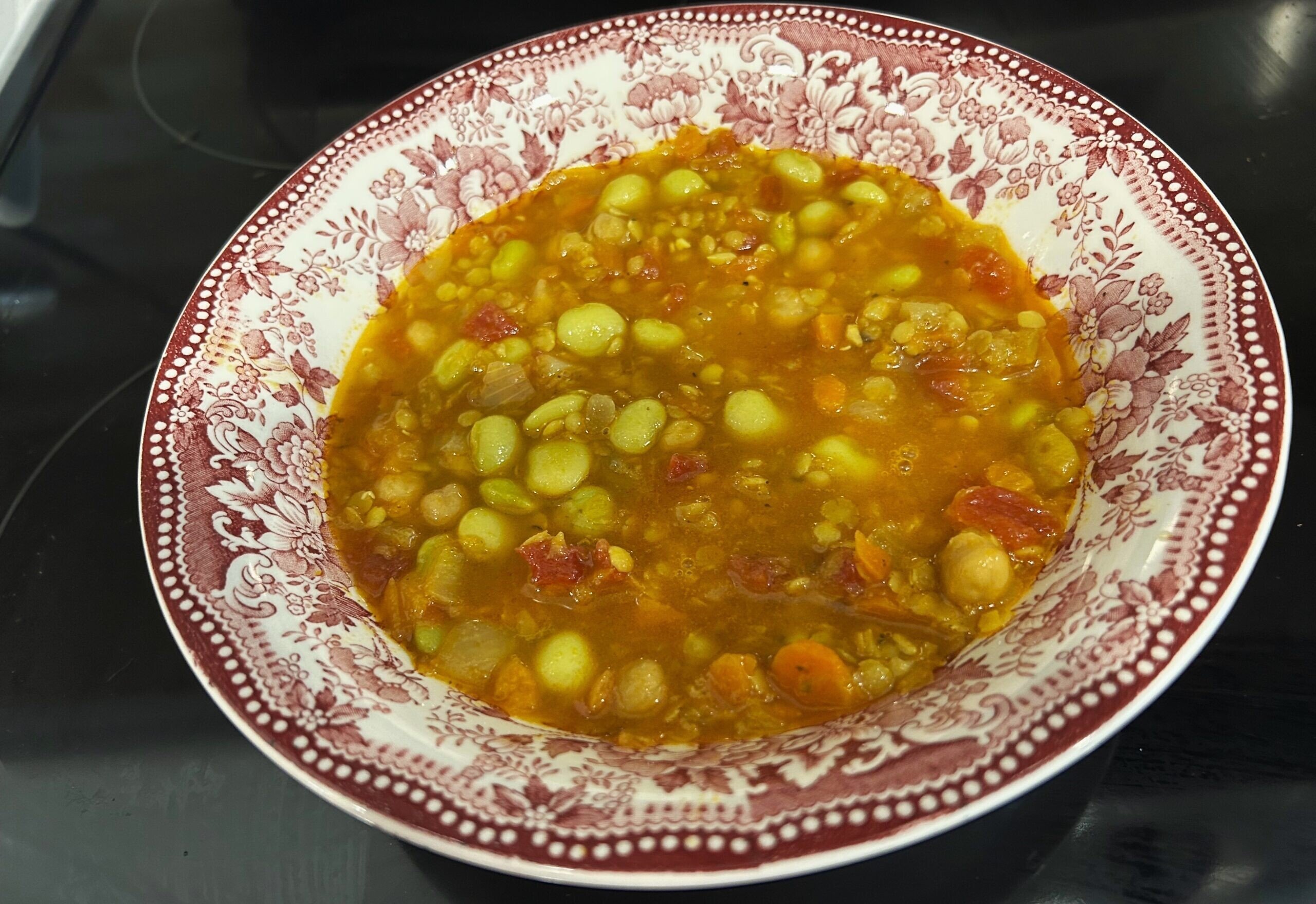
Moroccan Bean Soup (Pareve)
Serves 6-8
Cook’s Tips:
*Frozen ginger cubes are my staple: 1 cube equals 1 teaspoon ginger. No fuss.
*A Moroccan kosher spice blend called ras el hanout, containing many spices, is available online, or substitute ½ teaspoon each cumin, cardamom, allspice, turmeric and ¼ teaspoon of ground cloves.
*Fava beans are tan-colored beans resembling lima beans. Frozen lima beans are a good substitute.
Ingredients:
2 tablespoons olive oil
1 large onion, chopped
3 medium carrots, chopped
3 celery ribs, chopped
1 teaspoon chopped garlic in a jar
1½ teaspoons grated ginger
½ teaspoon each turmeric, cumin and cinnamon
4 to 5 cups pareve chicken or vegetable broth
½ cup red lentils, rinsed
1 can (15-ounce) diced tomatoes
1 can (15-ounce) chickpeas, undrained
1 (12-ounce) package frozen baby lima beans
salt and white pepper to taste
snipped fresh cilantro or parsley to garnish.
Directions:
Heat the oil in a large pot over medium heat.
Add the onion, carrots, celery, garlic and ginger. Sauté for 10 minutes.
Add all the remaining ingredients except the cilantro or parsley. Bring to simmer, cooking for 30 minutes until the lentils are softened. Adjust salt and pepper seasoning.
Serve hot, sprinkled with cilantro or parsley.
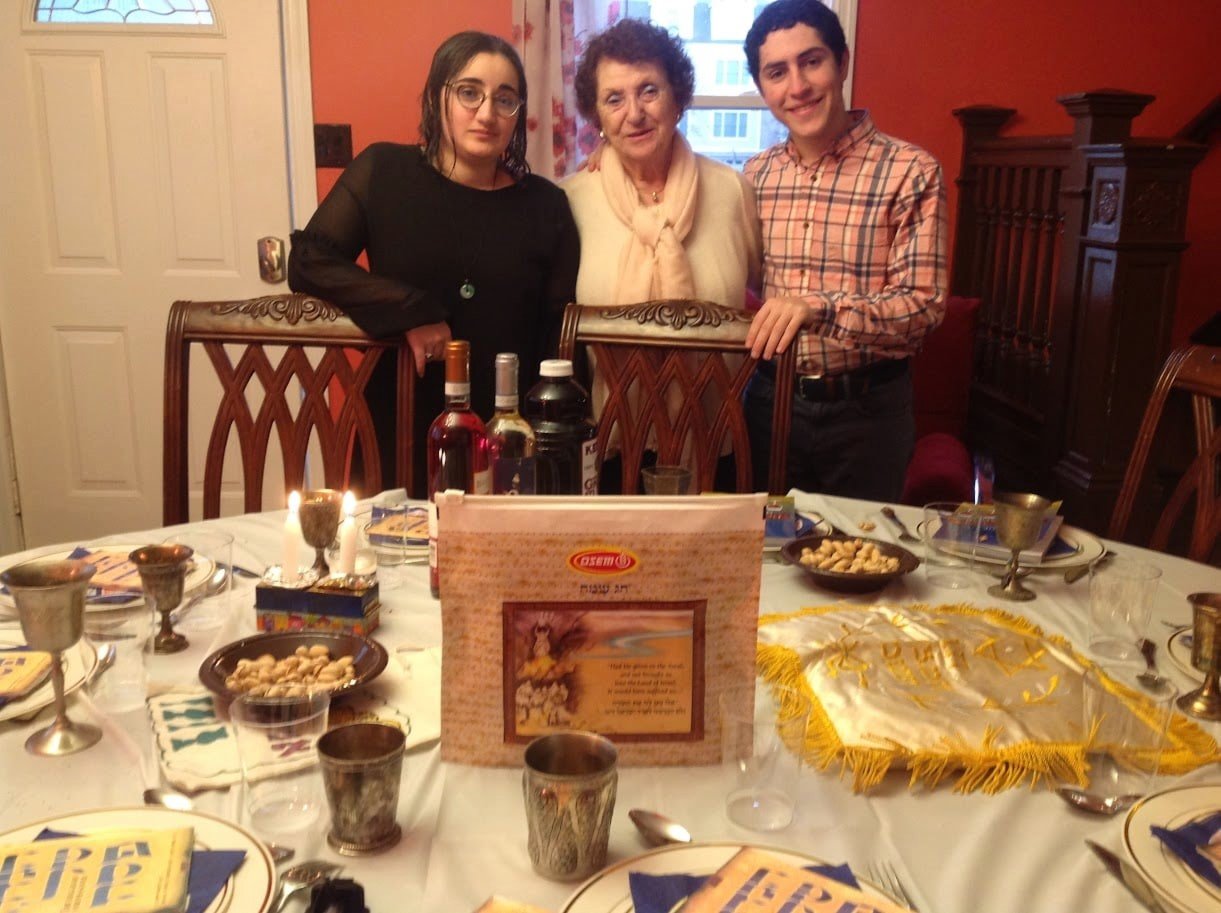
Blood Orange-and-Olive Salad (Pareve)
Serves 6-8
Cook’s Tips:
*Use navel oranges.
Ingredients:
3 medium blood oranges, peeled and thickly sliced
½ cup pitted black olives
½ cup pitted green olives
Dressing:
3 tablespoons orange juice
1 tablespoon olive oil
1/8 teaspoon each paprika, cumin, powdered garlic
Directions:
Arrange sliced oranges on a platter. Scatter the olives over. Cover and refrigerate.
Whisk the dressing ingredients in a small bowl. Drizzle over before serving.
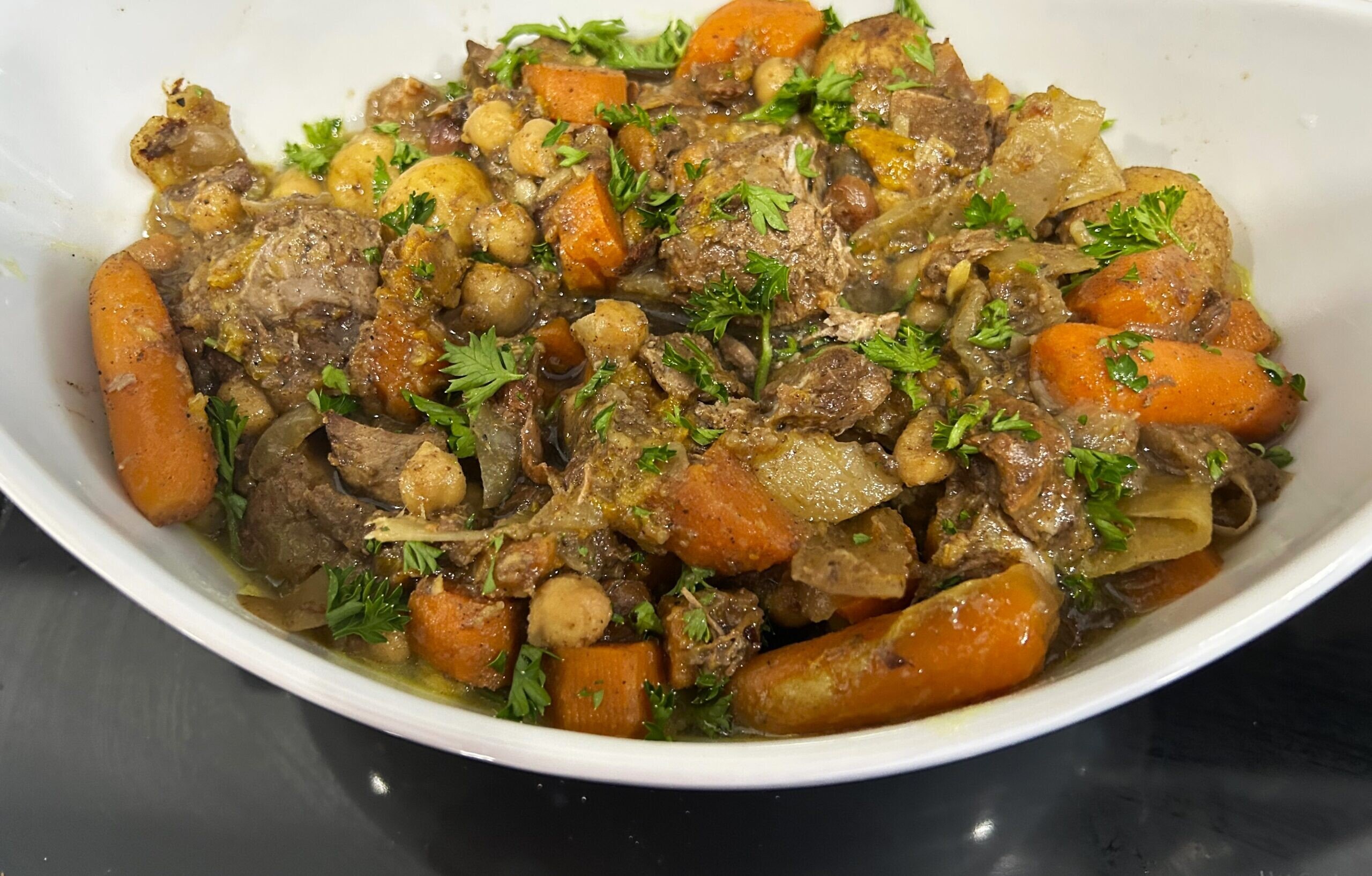
Crockpot Lamb Stew With Apricots and Prunes (Meat)
Serves 6-8
Cook’s Tips:
*May use lamb loin chops for cubed leg of lamb.
*For ras el hamout, substitute ½ teaspoon each cumin, cardamom, allspice, turmeric and ¼ teaspoon of ground cloves.
Ingredients:
5 tablespoons olive oil, divided
1 large onion, thinly sliced
12 to 15 baby carrots
2 to 15 little golden potatoes
1 teaspoon bottled chopped garlic
1 cup dried apricots
6 pitted prunes, halved
½ pounds cubed leg of lamb
1½ teaspoons ras el hanout or Moroccan spice blend
1 teaspoon ground ginger
2 cups beef broth
1 (15-ounce) can chick peas, drained
salt and pepper
Directions:
In a large deep pot, heat 2 tablespoons of oil over medium heat. Add the onions, carrots and potatoes, and sauté for 5 minutes. Sprinkle lightly with salt and pepper.
Add the garlic, apricots and prunes. Sprinkle lightly with salt and pepper. Transfer to the crockpot.
Heat 3 tablespoons oil to the deep pot. No need to wash the pot. Add the lamb and cook over medium heat until nicely browned on all sides. Transfer to crockpot.
Add the spice blend and ginger, and pour the broth over. Stir gently to mix. Cover and cook on Low for 5 hours. Then add the tomatoes and chickpeas. Cook for 1 hour more.
Serve hot.
May be made ahead of time and refrigerated.
Note: For oven cooking: cover and cook in preheated 350-degree oven for 1½ hours. Add tomatoes and chickpeas. Cook for 45 to 60 minutes longer or until lamb is tender. Add more broth, if needed.
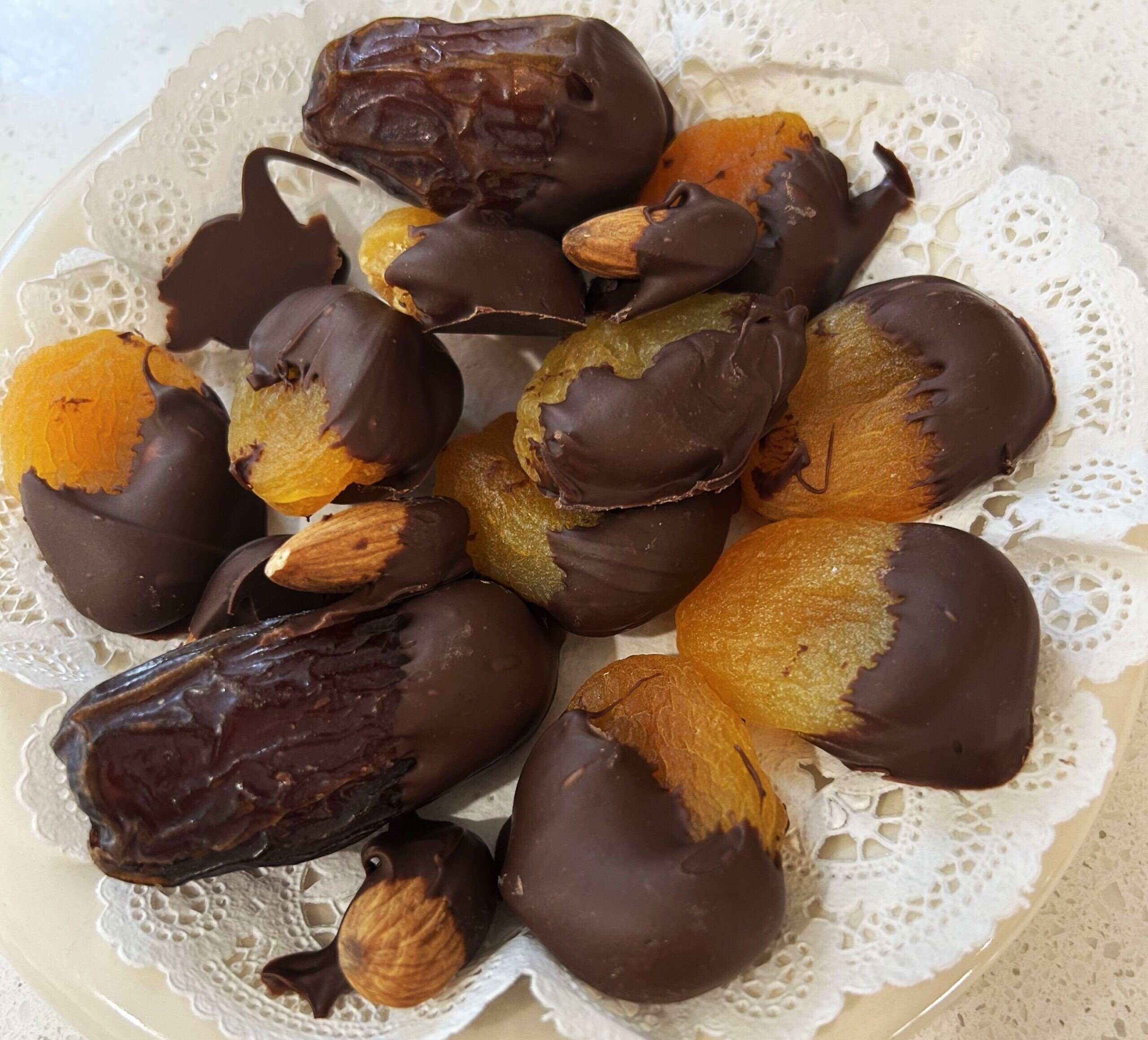
Chocolate-Dipped Apricots and Almonds (Pareve)
Makes about 1 pound
Cook’s Tips:
*Use a variety of dried fruits such as pineapple, mango or pears.
Ingredients:
1 (6-ounce) package dried apricots
1 cup whole almonds
1 cup pareve chocolate chips
1 tablespoon butter at room temperature
Directions:
Line a large baking sheet with wax paper. Melt the chocolate by placing it in a microwave-safe bowl; microwave for 15 seconds at a time, stirring after each 15 seconds. Once it looks shiny and almost melted with just a few lumps, add the butter. Stir until completely smooth. Use immediately.
With tongs, dip apricots into melted chocolate to cover half of each apricot. Place on prepared baking sheet. Repeat with almonds, dipping to cover half of each.
Refrigerate for at least 30 minutes to harden the chocolate. Store between layers of wax paper in a tightly covered container in a cool, dry place (not in the refrigerator).
Serve on a doily-covered tray.
Ethel G. Hofman is a widely syndicated American Jewish food and travel columnist, author and culinary consultant.














